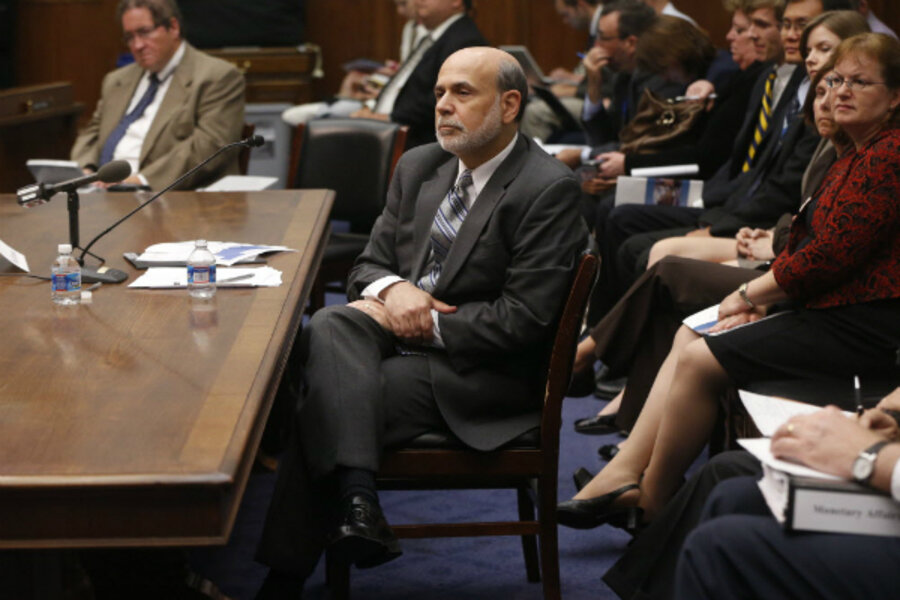Fed: Still full steam ahead on bond purchases, but maybe not for long
Loading...
The Federal Reserve’s unconventional efforts to boost economic growth aren’t about to end, but between now and Dec. 31 those efforts will probably start to slow.
And by the middle of 2014, the Fed expects that its program of bond purchases known as “quantitative easing” will probably be over.
That’s the outlook that emerged in records from a late-July meeting of the central bank’s policy committee that were released Wednesday afternoon.
Financial markets around the world are closely watching every twitch of the Fed’s policy posturing, because the US economy is still struggling to rebuild its normal momentum some five years after a financial crisis caused job losses to surge.
The Standard & Poor’s 500 stock index fell modestly – less than 1 percent – for the day, with the Fed news at the top of investor minds.
The minutes from the July 30-31 meeting gave little hint of when the policy committee would act. The Fed describes its timetable for quantitative easing (QE) as contingent on the economy: QE will only end by mid-2014 if growth and employment are on par with forecasts.
“If economic conditions [improve] broadly as expected, the Committee [will] moderate the pace of its securities purchases later this year,” the minutes said.
Under QE, the Fed is buying Treasury and mortgage-related bonds in an effort to keep long-term interest rates low and boost economic growth. That program exists alongside the more traditional Fed policy of setting short-term interest rates – which are currently near zero percent, thanks to the same goal of economic stimulus.
Phasing out of QE would represent good news in at least one way: It would signal that policymakers feel confident enough about the economic recovery to remove the extraordinary support.
But financial markets are apprehensive about how a Fed “exit” will work.
To the degree that bond markets around the world see such a move as a sign of tighter monetary policy ahead, that could cause investors to push interest rates higher in anticipation.
Already, interest rates on 10-year Treasury notes have jumped by about 1 percentage point since Fed officials began so-called “taper talk” about QE this spring. And credit markets around the world – notably in emerging market nations – have felt adverse ripple effects.
“Some [Fed meeting] participants felt that … overall financial market conditions had tightened significantly,” the minutes from July stated.
The record of the meeting reveals a split among members of the policy committee, which is led by Fed Chairman Ben Bernanke.
“A few members emphasized the importance of being patient and evaluating additional information on the economy before deciding on any changes to the pace of asset purchases,” the document says. But in the next breath, it adds that others believe “it might soon be time to slow somewhat the pace of purchases.”
For now, the Fed will keep priming the QE pump, buying some $40 billion of mortgage-backed securities plus $45 billion in Treasury securities each month.
The policy committee has three more scheduled meetings before the end of the year when a “taper” decision could be made: mid-September, late October, and mid-December.
Economist Paul Edelstein, for one, doesn't think the move will come in September. An economist at the forecasting firm IHS Global Insight, in Lexington, Mass., he predicts the decision will come at the December meeting.






